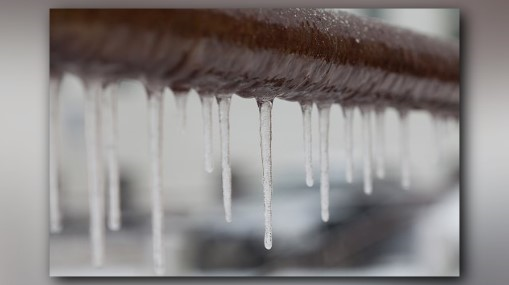Important Advice for Preventing Frozen Pipes in Winter Seasons
Important Advice for Preventing Frozen Pipes in Winter Seasons
Blog Article
Any individual maintains their personal rationale about Prevent Frozen Pipes .

Cold weather can wreak havoc on your plumbing, particularly by freezing pipes. Here's just how to prevent it from happening and what to do if it does.
Intro
As temperatures drop, the risk of frozen pipelines boosts, possibly causing pricey repair services and water damages. Recognizing just how to stop icy pipes is vital for property owners in chilly climates.
Avoidance Tips
Protecting vulnerable pipelines
Cover pipes in insulation sleeves or use warm tape to shield them from freezing temperature levels. Concentrate on pipes in unheated or external areas of the home.
Home heating techniques
Keep indoor spaces properly heated up, especially areas with pipes. Open up cupboard doors to allow cozy air to distribute around pipes under sinks.
Exactly how to determine icy pipelines
Seek decreased water flow from faucets, unusual smells or sounds from pipelines, and noticeable frost on exposed pipes.
Long-Term Solutions
Structural modifications
Think about rerouting pipelines far from outside walls or unheated locations. Include added insulation to attics, cellars, and crawl spaces.
Upgrading insulation
Buy top notch insulation for pipelines, attic rooms, and wall surfaces. Appropriate insulation assists preserve constant temperature levels and minimizes the danger of icy pipelines.
Securing Exterior Pipes
Yard hoses and exterior faucets
Detach and drain garden pipes before winter months. Install frost-proof spigots or cover outside faucets with protected caps.
Comprehending Icy Pipelines
What creates pipes to ice up?
Pipelines freeze when subjected to temperatures listed below 32 ° F (0 ° C) for expanded periods. As water inside the pipes freezes, it expands, putting pressure on the pipe wall surfaces and potentially causing them to rupture.
Dangers and problems
Frozen pipelines can cause water system disruptions, residential property damage, and costly repair work. Burst pipes can flooding homes and cause extensive structural damages.
Signs of Frozen Pipes
Determining icy pipelines early can avoid them from rupturing.
What to Do If Your Pipelines Freeze
Immediate actions to take
If you believe frozen pipelines, keep taps open to relieve pressure as the ice thaws. Utilize a hairdryer or towels soaked in warm water to thaw pipes gradually.
Verdict
Stopping frozen pipelines needs aggressive procedures and fast reactions. By comprehending the causes, indicators, and preventive measures, property owners can protect their pipes during cold weather.
5 Ways to Prevent Frozen Pipes
Drain Outdoor Faucets and Disconnect Hoses
First, close the shut-off valve that controls the flow of water in the pipe to your outdoor faucet. Then, head outside to disconnect and drain your hose and open the outdoor faucet to allow the water to completely drain out of the line. Turn off the faucet when done. Finally, head back to the shut-off valve and drain the remaining water inside the pipe into a bucket or container. Additionally, if you have a home irrigation system, you should consider hiring an expert to clear the system of water each year.
Insulate Pipes
One of the best and most cost-effective methods for preventing frozen water pipes is to wrap your pipes with insulation. This is especially important for areas in your home that aren’t exposed to heat, such as an attic. We suggest using foam sleeves, which can typically be found at your local hardware store.
Keep Heat Running at 65
Your pipes are located inside your walls, and the temperature there is much colder than the rest of the house. To prevent your pipes from freezing, The Insurance Information Institute suggests that you keep your home heated to at least 65 degrees, even when traveling. You may want to invest in smart devices that can keep an eye on the temperature in your home while you’re away.
Leave Water Dripping
Moving water — even a small trickle — can prevent ice from forming inside your pipes. When freezing temps are imminent, start a drip of water from all faucets that serve exposed pipes. Leaving a few faucets running will also help relieve pressure inside the pipes and help prevent a rupture if the water inside freezes.
Open Cupboard Doors
Warm your kitchen and bathroom pipes by opening cupboards and vanities. You should also leave your interior doors ajar to help warm air circulate evenly throughout your home.

I hope you liked our topic about Preventing and dealing with frozen pipes. Thanks so much for finding the time to browse our piece. In case you liked our article please don't forget to share it. I cherish your readership.
Request Appointment Report this page